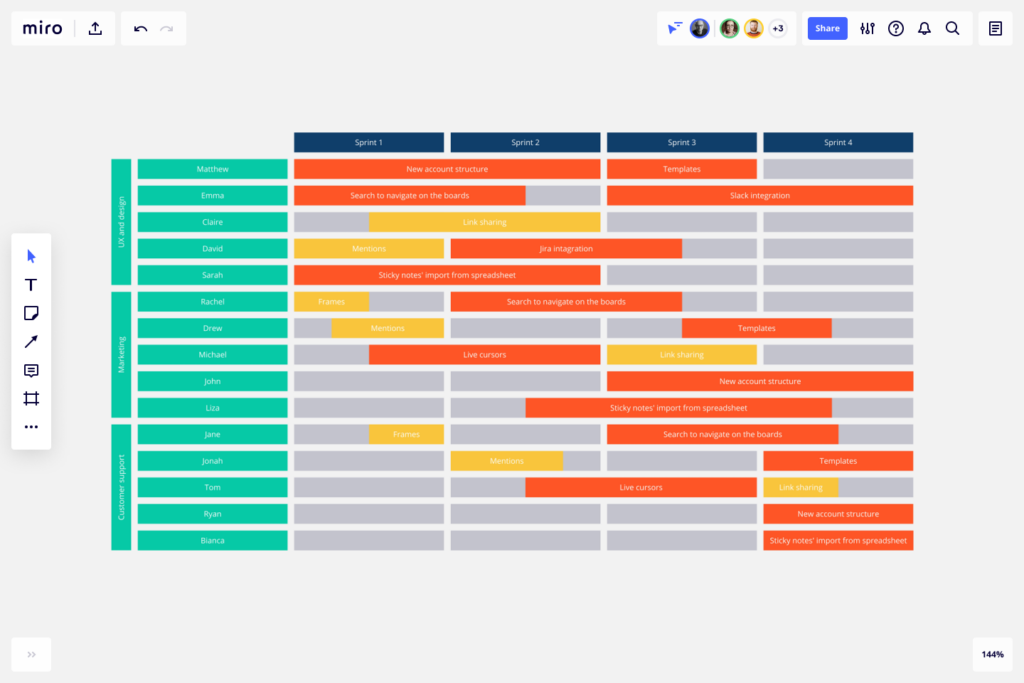The startup team usually aims to achieve a profitable business model. Naturally, they have a plan in mind to achieve the desired business model. But in reality, you can not start a business just by having a mental model or idea. That’s why the startup team needs a flexible and comprehensive plan when starting out; a program and path that focuses on key goals and at the same time shows the right direction given all the ambiguities ahead. In this way, the possibility of team failure is greatly reduced. The present article introduces the “Startup Roadmap” as a suitable solution to meet this need.
What is a Startup RoadMap?
The startup team’s primary mission is to turn one or more ideas into a new profitable business. On the other hand, unlike construction or industrial projects, founders cannot predict and manage the startup in a detailed schedule. Regarding so many ambiguities along the way, the startup plan needs to be flexible.
One of the best solutions for successful planning is to use a “roadmap.” A startup roadmap provides the project manager and stakeholders with an overview of the goals, ideas, activities, essential resources, and desired outcomes. In fact, a roadmap is a kind of overview planning that depicts key activities over time.
As you can see in the image below, the startup roadmap shows the major goals and strategies for achieving success over time in the form of a bar chart.

In fact, a roadmap is a top-down view of a project that helps the project manager inform all stakeholders and the team member about its critical points: milestones, tasks to be done in each milestone, members responsible for each task, expected results, etc.
Project Roadmap Vs. Project Schedule
The startup roadmap is a top-down view of a project and does not go into detail. In contrast, the project schedule contains details of all activities and resources needed to succeed over time. The startup schedule should give accurate answers to these questions:
- What are the main goals?
- #What activities should be taken to achieve them?
- What resources are needed?
- How is each project managed?
- Deadline and cost of each project
- budget plan for each project
- Projects’ risk factors and their probable consequences on startup.
In addition to the above, other project details such as customer names, training needs, and staffing plans should be mentioned in the startup schedule. All the elements that help you manage the startup and closely control it should be included in this schedule.
However, the startup roadmap is a comprehensive picture that does not consider all the details in the project schedule. That’s why you can control it more quickly and easily report it to project stakeholders (investors, team members, etc.).
To examine it in more details, the startup road map is like a picture on a wall, while the project schedule is the same picture under a microscope. This is why changing in schedule requires significant time and expenses, and if not performed carefully, it can ruin the roadmap.
But changing the roadmap is much easier and paves the way for a correct and accurate schedule change.
How to make a startup roadmap
The startup roadmap has a simple, flat structure with a few rows. It looks like a Gantt table, but it focuses on key goals, projects, and key resources instead of activities.
To start, enter the following on the left column:
- Key goals
- Sales projects
- Product or service manufacturing projects
- Team building projects
- Marketing projects
- Providing the main resources
You can provide more details as needed. However, avoiding details increases your roadmap flexibility and agility.
In the next step, enter your desired schedule at the top of the page. This schedule may vary based on the control you wish to have over the startup as well as the time it takes to reach your goals. For example, you can define the duration of two weeks to review and control activities. Of course, some activities may require more extended periods, such as months or years. However, for more control, it is better to divide them into more minor activities.
You can also specify who is responsible for tracking each of the activities as well as the needful budget.
It’s better to set your startup roadmap in an Excel file or MSP software to use the capabilities of this software and can change the file if necessary.
A roadmap is an effective tool for aligning a team or organisation’s core strategies and short-term planning..
Simple Roadmap Template
In this section, we have offered a basic startup roadmap template. For more simplicity, this template doesn’t include durations and resources. You can customize it for your startup by adding time and resources and making necessary changes.
Goal 1:
Preparing for entrepreneurship
Steps:
- Get acquainted (gain, obtain) with present-day techniques
- Develop your skills
- Expand your communication.
- Identify entrepreneurial opportunities.
Goal 2:
Get ready to launch
Steps:
- Turn opportunities and ideas into business models.
- Plan for your business.
- Design your brand
- Do primary market research.
- Build your team
- Agree on executive details
Goal 3:
Product design and launch
Steps:
- Shape the conceptual design of the product
- Make the minimum viable product (MVP)
- Get early customer feedback
- Offer improved product
- Launch your website
- Determine the best place to settle
- Be active on social media
Goal 4:
Evaluation and development
Steps:
- Measure the progress of your business
- Determine sales mechanisms
- Evaluate intelligently
- Network in an entrepreneurial ecosystem
- Identify the platforms you need
- Become more agile with outsourcing
- Retain customers
Goal 5:
Shaping management systems
Steps:
- Consult the best
- Decide on legal issues
- Determine the board
- Manage human resources
- Set up financial and accounting systems
Goal 6:
Attract capital and cooperate with investors
Steps:
- Get knowledge about the process of absorbing capital
- Determine the value of your company
- Strengthen ways to raise capital
- Familiarize yourself with online fundraising and platforms
- Enter into negotiations with the investor
- Use the capabilities of your investor
- Determine the exit strategy of the startup.
Using the roadmap, the project manager can prevent people from confusion by specifying tasks and deadlines.

